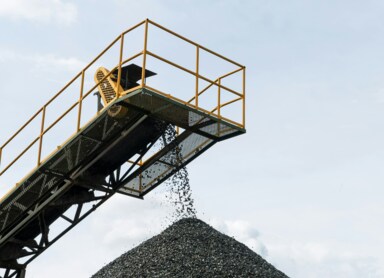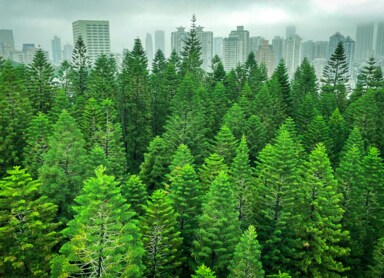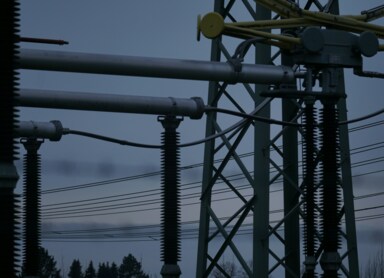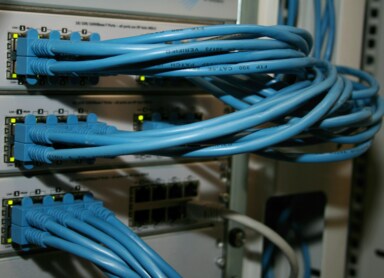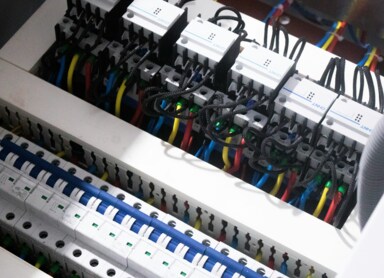How does hydropower work? We explain
Man has been using water as a source of energy since the dawn of time, using it to power infrastructure. Today, water energy is also one of the main focuses of Renewable Energy Sources. Learn about its potential and the principle of operation.
Hydropower - fundamentals and operation
Hydropower (hydropower) is based on the use of energy sources produced by marine and inland waters. This is made possible by the continuous circulation of water through the action of solar energy, which ensures the circulation of water in nature. In the most simplistic terms, this circulation can be depicted in three steps:
- falling rains feed reservoirs and rivers;
- water stored in nature in liquid form flows between points at different heights or moves as a result of gravity;
- the sun causes evaporation, then the whole cycle repeats itself.
Hydropower technologies primarily use inland waters with high flow rates and high gradient. Most often, energy is provided by natural river currents or the difference in level between the water stored in a reservoir or lake and the channel in which it flows. To maximise the effect, hydroelectric power plants are built near valleys or waterfalls, as this is where the conditions are most favourable for energy production.
The principle of a hydroelectric power station itself is quite simple. Water falling from the mountain drives turbine blades, which, when set in motion, start a generator that produces electricity. The energy thus generated is distributed to consumers via a power line. Of course, this is not the only way to use hydropower
Harnessing hydropower - principles and technologies
Let us try to illustrate the principle of hydropower with a few examples in order to create a complete picture of the possibilities of using these technologies.
Falling water energy
The use of water fall energy is possible on rivers or lakes. As a result of the dam or weir damming up water masses, potential energy is accumulated, which is then converted into electrical energy as a result of the fall. The movement of the water masses powers a generator that produces electricity. Depending on how the water is fed to the turbines, hydroelectric plants are divided into:
- flow-through;
- derivative;
- reservoir;
- pumped storage;
- run-of-river with pumped storage.
Four types of turbines are used in hydroelectric power plants - Kaplan, Francis, Turgo and Pelton. Each of these systems operates optimally at a different gradient. Still the largest tidal power plant remains the French construction on the Rence River from 1967. Equipped with 24 reversible water turbines, it generates as much as 240 MW of power!
Tidal energy
Hydropower also makes use of tidal energy. This is made possible by the mutual gravitational interaction of the Earth, the Moon and the Sun. Tides occur because there is an imbalance between the Moon's gravitational pull and the centrifugal force of the Earth's rotation around the Earth-Moon system. As a result, water flows into and then out of the reservoir, driving tidal turbines that harvest the kinetic energy of the flow.
Wave energy
Yet another way of harnessing the energy of the waters is through sea waves, which - as can easily be seen - move not only up and down (accumulating potential energy), but also forwards and backwards (generating kinetic energy). Unfortunately, this procedure is technically quite complicated due to the low concentration of energy and its very high oscillation - during storms there is a lot of energy, but in flare (windless weather) there is hardly any.
Devices such as:
- three-part rafts using vertical wave motion;
- ground-mounted 'ducks' that use horizontal wave motion.
Marine thermal energy
Somewhat less common hydropower technologies include harnessing the thermal energy of a body of water. The technology - OTEC (Ocean Thermal Energy Conversion) - relies on the surface water having a higher temperature than the deep water. Due to the need for a high but constant amplitude, this type of solution is used in equatorial areas.
Taking advantage of the temperature difference requires the use of a working medium, which is ammonia, freon or propane. The substance evaporates at surface water temperature and is condensed using water drawn from a depth of about 500 m. OTEC technologies are used on a large scale in Japan, among others.
Of course, these are not the only ways of generating hydropower. Examples of other technologies include the diffusion of saline seawater or compressed air turbines, which are compressed by rising water masses.
Hydropower production - the process and environmental effects
Hydropower generation is a process that, once set in motion, operates practically on its own, as the movement of water masses results from the forces of nature and gravity. It does not require the exploitation of deposits of conventional energy sources and does not pollute nature. However, while hydropower is an important RES sector, its environmental impact should not be overlooked. Potential impacts of installing dams, damming facilities and other hydropower infrastructure include:
- alteration of river flows and interruption of river flow;
- increased deforestation;
- increased risk of flooding, landslides and siltation of reservoir bottoms;
- threat to resident species in the areas affected by the works;
- generation of noise by operating power plants.
The construction of hydropower plants of very high capacity can lead to the disruption of the global hydrological cycle. An example of such an investment is the Three Flows Dam in China. Its construction has caused the Earth's rotation to slow down and its axis of rotation to change slightly2.
Renewable hydropower versus other energy sources - a comparison
Can it be said, then, that renewable hydropower is a good development direction when it comes to RES? Unfortunately, conditions in Poland are not very favourable for this type of installation. Precipitation is not abundant and unevenly distributed, with practically no significant slopes. The highly permeable soil structure also means that much of the precipitation cannot be used.
In Poland, it is estimated that only 2.7 per cent of total electricity production comes from hydroelectric power plants. This compares with 98% in Norway, 70% in Austria and 61% in Switzerland3.
Poland's location on the map seems to promote more the use of other RES sources, such as photovoltaics and wind energy. These may not only be more efficient, but also less 'capricious' than ocean currents.
The future of hydropower - development prospects and challenges
Ways of harnessing hydropower are constantly evolving and engineers are looking for new solutions that will be more efficient. In which direction are hydropower technologies heading?
Work is underway to improve tidal power plants. It is estimated that fully exploiting the earth's potential would be able to meet the needs of 40% of the world's population. Yet another solution of interest is reciprocating pumps connected modularly by a common pipeline. Novelties include underwater farms similar in shape to wind turbines or artificial lagoons. An interesting project is Solar Island, which uses the phenomenon of water heating by sunlight and a steam generator to generate electricity.
If your company is considering tapping into renewable energy technologies, hydropower may be a good option. Please do not hesitate to contact our specialists, who will help you develop the optimal direction for your company's energy development.
1. Igliński B. i in.; Technologie hydroenergetyczne. Monografia; Wydawnictwo Naukowe Uniwersytetu Mikołaja Kopernika; Toruń 2017.
2. https://wyborcza.pl/7,75400,15392148,chinczycy-spowolnili-obrot-ziemi.html [dostęp: 6.05.2024 r.]
3. Akademia Viessmann. Energetyka wodna [dostęp: 6.05.2024 r.]
